# 29 Journey to the Galápagos (I): Quito and First Impressions
On logistics, encebollado, and sea lions
Hello, I’m Claire Polders, an author and nomad, not photographed above. Free subscribers to Wonder, Wander, Write can enjoy weekly posts on traveling, mindful living, books, and art. I also publish personal essays. Paid subscribers will receive additional posts and have access to future chats.
Quito, Capital of Ecuador
The sun hangs low on the horizon as we fly into Ecuador. The landscape is green and rough, with deep canyons and gorges—seemingly impossible to cross. We barely slept on the overnight plane, and when our second flight arrives with a three-hour delay, we are exhausted. The altitude of 2,700 m (9,000 ft) doesn’t help. From the taxi window we watch how the wild land turns into the city jungle of Quito bathing in pink sunset light.
Our hostel confirms what we read online: Quito is not safe in the dark. It’s not recommended to roam the streets after 6pm, not even for a few blocks in the historic center. We can either call an Uber for a few dollars to drive us to a restaurant or eat at the hostel bar we assume to be bad. Tired as we are, we settle for the latter and are unfortunately right.
The next day, we meet our guide at the reception in the morning. We’re here for a free (tip-based) walking tour through the historic center and introduce ourselves to a solo male traveler who hails from France by way of Tunisia and Cyprus. He appears standoffish at first, perhaps not in the mood to socialize with a couple, yet his reserve proves to be mere shyness and rubs off within minutes. With our talkative group of four we climb to the Basílica del Voto Nacional de Sagrado Corazón de Jesús—a name the guide wants us to learn by heart. We admire its gargoyles in the shape of Ecuadorian animals such as lamas, tortoises, and iguanas. Later, when we encounter marine iguanas in the wild, we will think they look like gargoyles.
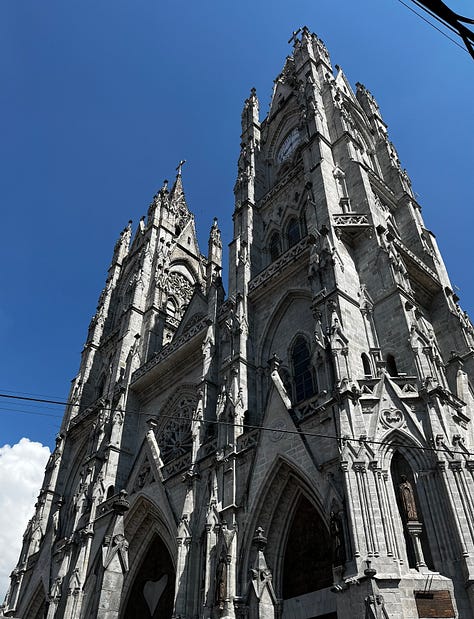
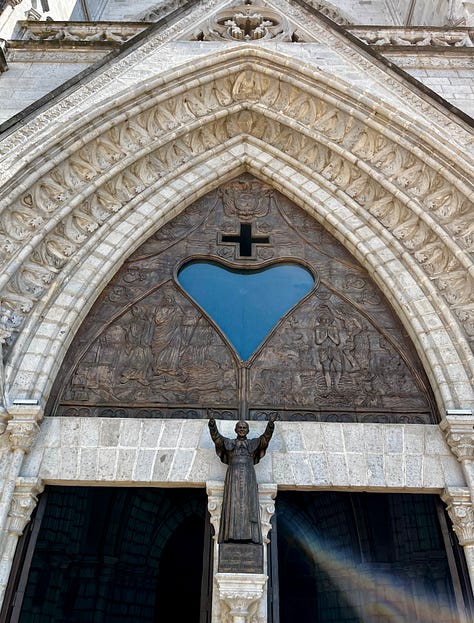
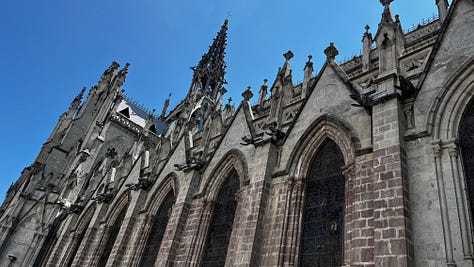
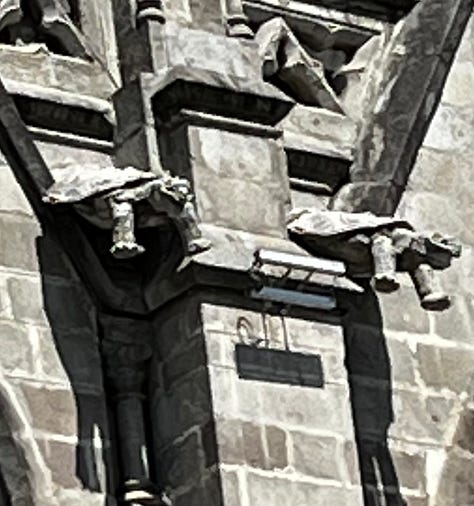
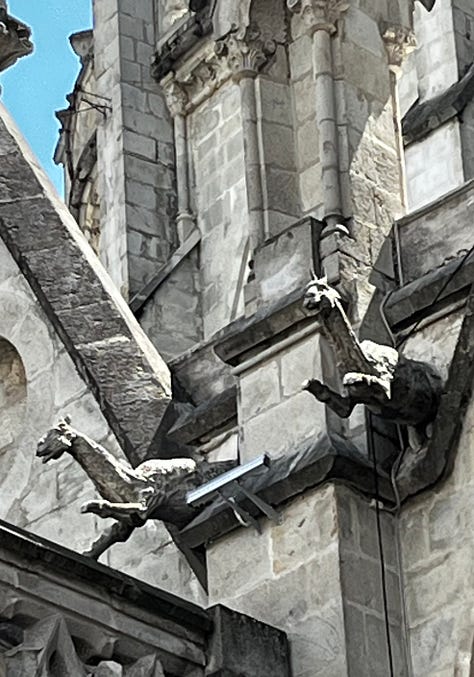
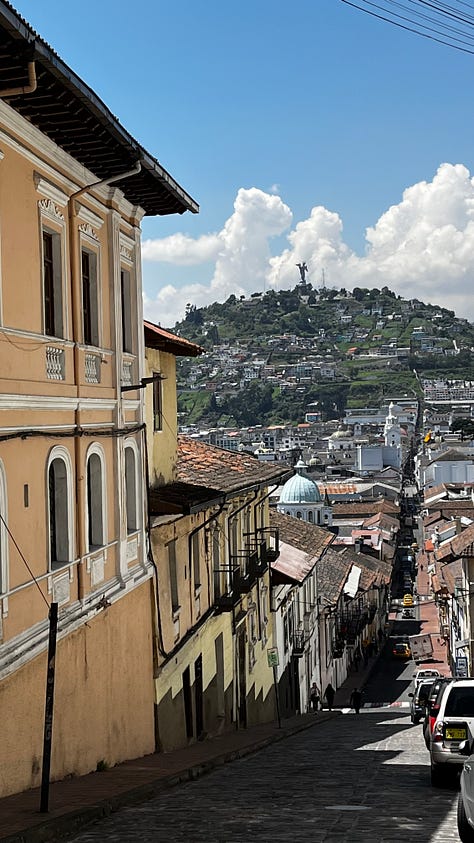
We visit the library roof top, do a chocolate tasting, bite into some corn-meal empanadas, and have lunch at the mercado centrale, where we taste encebollado, Ecuador’s famous fish soup made with albacore, onions, and cassava. Our version is served with plantain chips and popcorn that we’re supposed to dump into the soup at the end. It tastes… interesting!
After the group tour, Daniel decides he needs a haircut. This has become a tradition of ours, going to hairdressers all over the world. We ask advice from a local and approach a barber in a white doctor’s coat. People sit waiting for him in red plastic chairs, but the female hairdresser is available. She does such an amazing, careful job on his hair, that I decide to get my hair cut as well. The end result is a bit too short and straight, but I don’t mind: I’ll be wearing a cap or hat on most days this month.
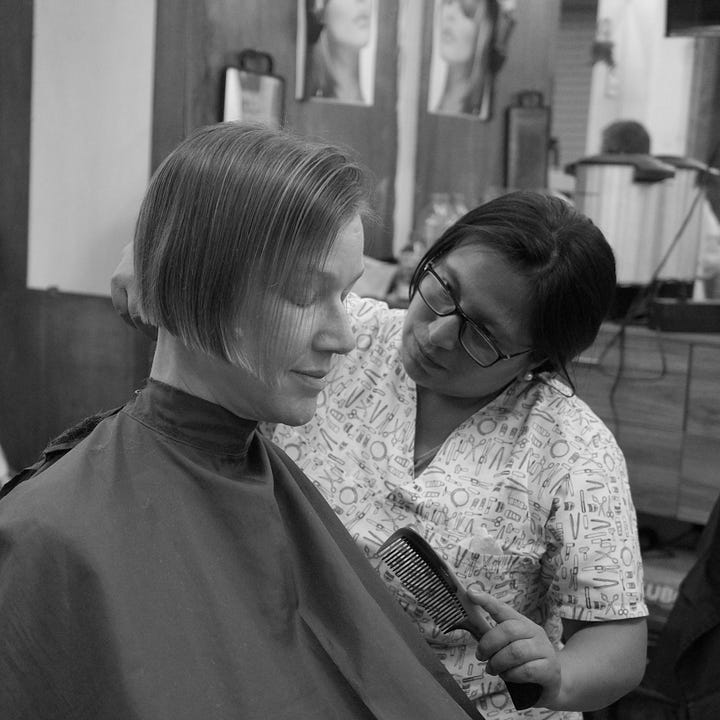

Flying to San Cristobal—Arrival on the Island
Our driver picks us up from our hostel in Quito at 6:30 am. It’s already light outside and the streets are crazy busy. Mucho tráfico por la mañana, our driver complains. Siempre! Cars clog the two-lane roads, pedestrians on their way to work or school share the narrow sidewalks, and blue buses exhaling black smoke turn too sharp corners. Some of the stone walls have suspicious blue stripes.
The airport is calm by comparison. We present ourselves at the Galápagos Governing Council counter to purchase our obligatory $20 (payable only in cash) transit control card. We hadn’t been able to pre-register our visit online, but this appears not to be a problem. The english-speaking clerk just wants our passports, first address on the Galápagos Islands, and the length of our stay.
We get to the luggage inspection area next. From what I read online, I’d expected the examination to be a time-consuming and thorough affair. There are supposedly a lot of food items and other things we aren’t allowed to bring to the Galápagos Islands. But all they do is run our bags through an X-ray machine and give them a tag. Is that all? Sí, buen viaje!
The flight to Guayaguil, Ecuador’s largest city, takes less than an hour. We land, wait 45 minutes on the plane for other passengers to embark, and take off again. The second leg of our trip, crossing 1,000 km (600 miles) to the isolated archipelago takes an hour. In the plane, we fill out a form, declaring what we are or are not bringing in our luggage, and I declare I’m bringing food, since I always carry nuts with me.
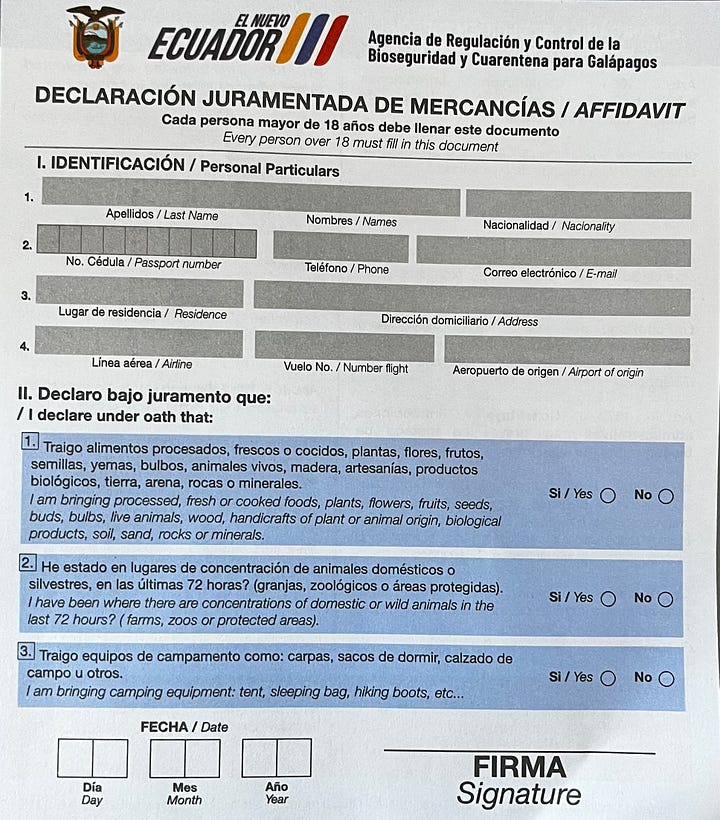
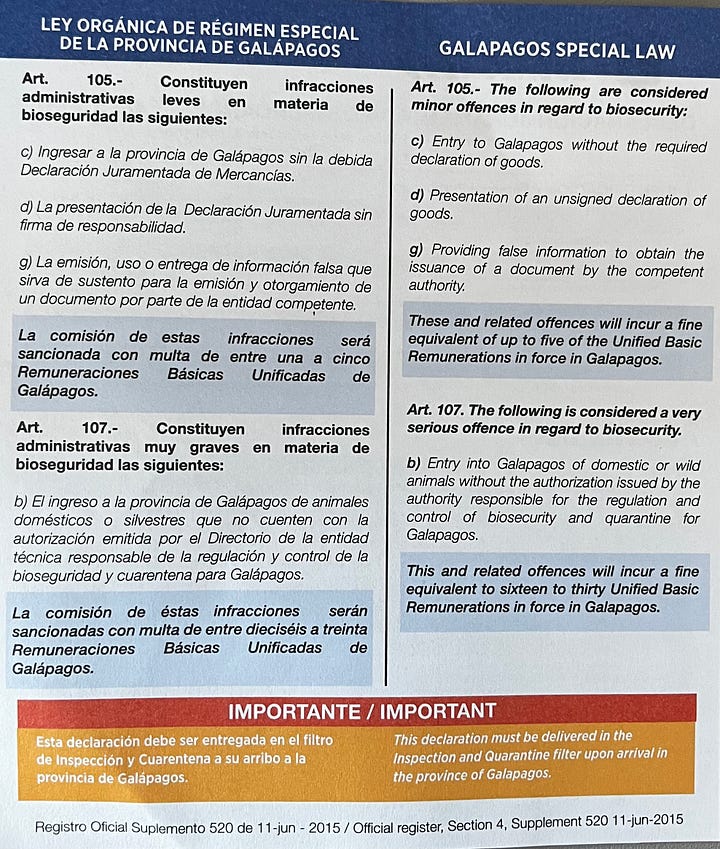
At the single-runway airport of San Cristobal, we show our transit control cards, pay our $200 entrance fee (payable only in cash) to the Galápagos National Park, and hand over our declaration forms: not a glance or comment. Some agents randomly open bags and peek inside. I volunteer to show them my food, which they would not have found otherwise, and they tell me it’s okay. Only fresh fruits and unshelled, unprocessed nuts can sprout and grow. My almonds and walnuts pose no environmental threats.
Staff members take the checked bags off the conveyor belt and line them up like suspects. All travelers watch at a distance from behind a double yellow line while a German shepherd inspects our bags. Is the dog sniffing for drugs? Forbidden fruit? The dog has no interest in any of our bags, but two backpacks, not mine, are set aside for further inspection.
The sun outside is brutal. The town of San Cristobal and capital of the Galápagos Province, Puerto Baquerizo Moreno, is only a 15-min walk, but our noon arrival makes going on foot ill-advised. The UV-index is 11.
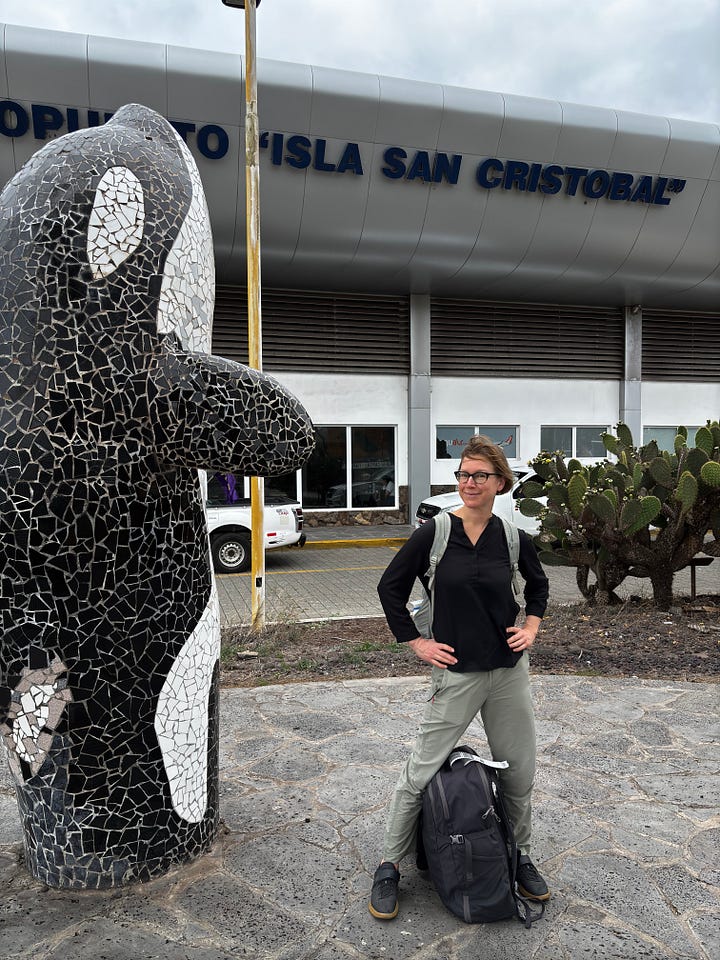
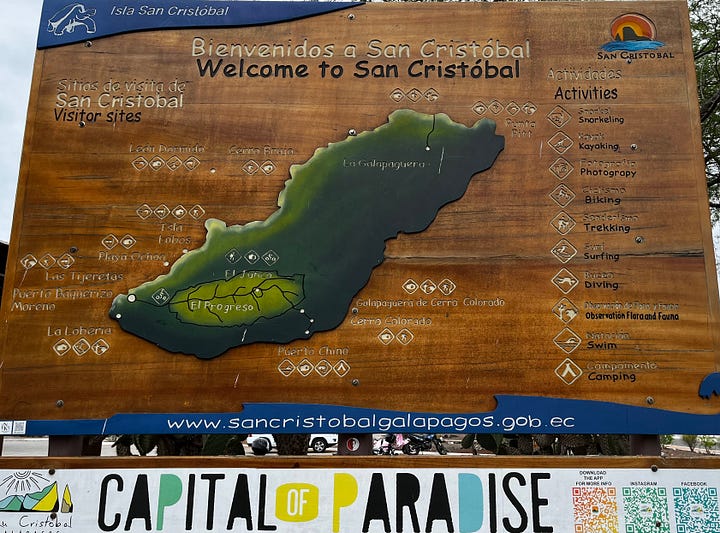
We study the map of “The Capital of Paradise” as we wait for our AirBnB host to pick us up. She graciously points out the market, the bakery, and her favorite fish restaurants before welcoming us into her house, an apartment on top of her home. We can see the ocean from our bed and the breezes will keep us cool. The temperature is surprisingly mild for being so close to the equator.
First Impressions: Sea Lions!
Puerto Baquerizo Moreno is not a pretty town. Most structures appear to have been hastily made from cement and corrugated iron. Sidewalks are cracked. The fresh food market, where we go first, is a sad affair with overpriced not so fresh produce. We easily find what we need, however, in the plentiful minimarts all around: avocados, eggs, chia seeds, quinoa, lentils, peanuts, raw cacao nibs, and carrots.
Closer to the malecón, the harbor with its docks and piers, the town looks more attractive. No doubt to please us tourists. Between tasteful souvenir shops, ice cream vendors, and restaurants are sculptures of animals, playgrounds, and shaded pavilions. A statue of Darwin graces the square.
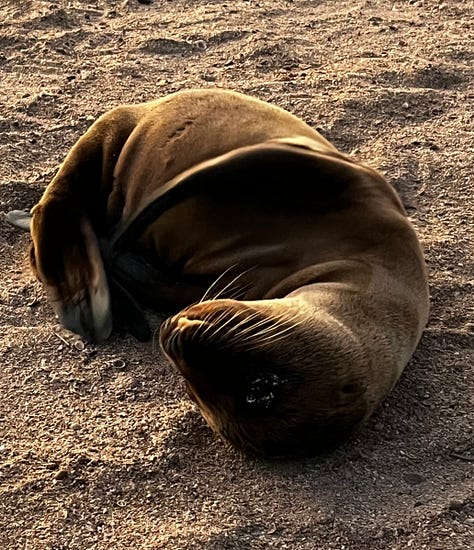
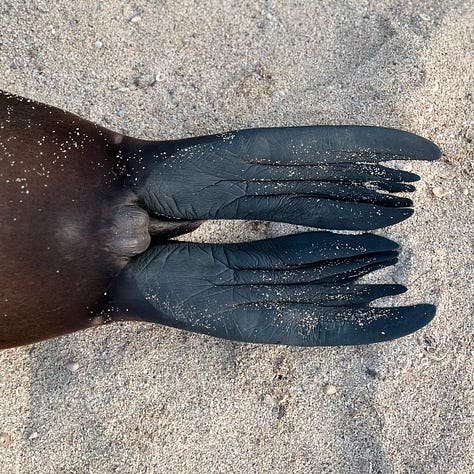

We hear the sea lions long before we see them, calling and barking at one another. There are at least a hundred of them right there in the harbor, basking in the sun, frolicking on the sand and boulders, and more in the water, hunting and playing. Pups drink from their mothers, juveniles wrestle with one another, and bulls bark to prove their power.
We walk along the water, giddy with delight. The sea lions are everywhere, offering endless entertainment. Not just on the sand, but on the paved streets, on top of wooden benches, below street lights, and hiding underneath the terrace chairs. They remind us of belching drunken sailors or pets hoping to get adopted.
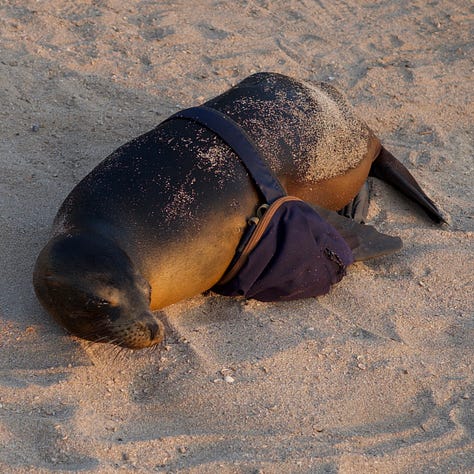

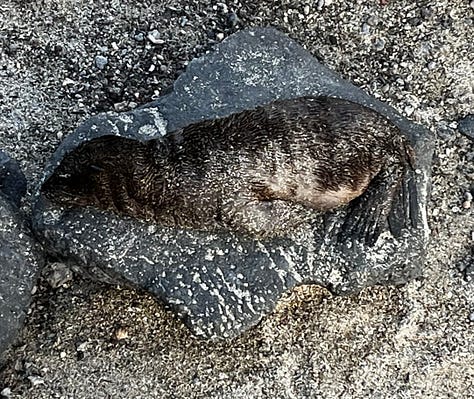


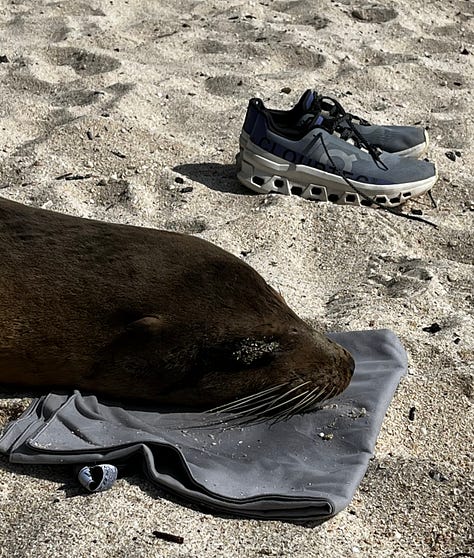
For hours, we watch them and try to interpret what we see: Why do they bend backward so much that their heads are basically upside down? Why do their pelts itch—are sea fleas a thing? Is she using her flippers to pet her baby or push her baby toward her nipples? Why is that seemingly grown sea lion nursing? Might it be sexual foreplay? Why do they sleep huddled together? For protection from dominant males or the cold, or just because they like contact? Why does that one camouflaged sea lion pup sleep all alone?
I get so curious it makes me feel high: I want to know everything about sea lions all at once. But oh! There’s my first marine iguana sunbathing on a rock, surrounded by an abundance of bright red crabs. If there’s this much life on the human-invaded shore, I think, how must it be below the surface?
As Daniel and I make our way back to the house after sunset, we promise ourselves to go snorkeling the next day.
Related Posts
Last week, I wrote about how we got ready for our journey to the Galápagos Islands.
For more travelogues on other destinations, you may want to read:
Time to Say Goodbye
I typically write posts once a week, but my heart is so full since I arrived in the Galápagos and I have so much to share, that I might post more frequently while I’m here. This way I can keep my essays short without depriving you of experiences and photos you might find interesting.
All my best,
Claire
P.S. If you have any specific questions about the Galápagos, please let me know! Now is the time.







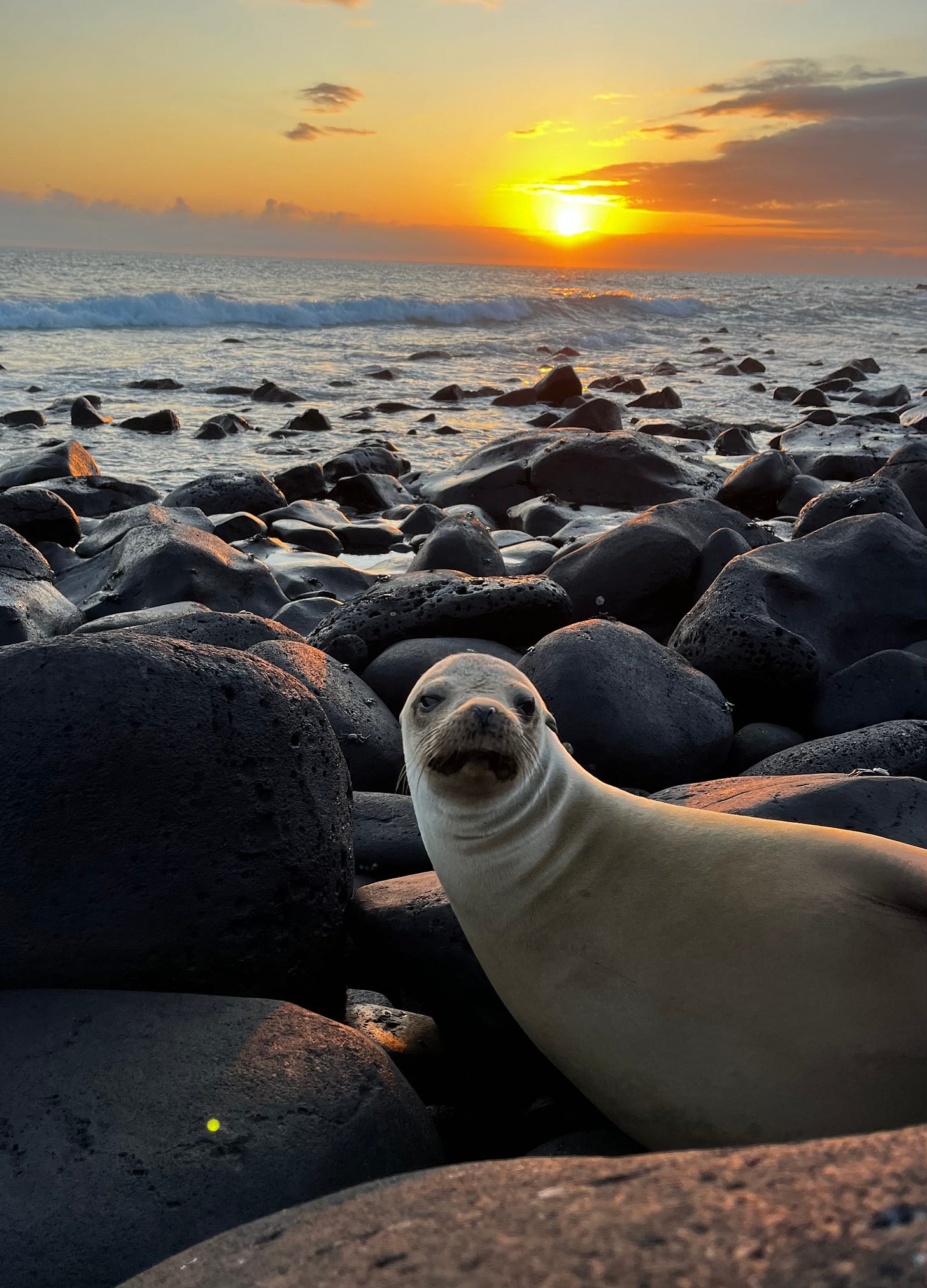



Your writing is absolutely sublime Claire! You transported me right to where you were, the dodgy cafe, the amazing architectural buildings, the adorably picturesque sea lions 🦭! I can’t wait to dive in to your back catalogue of articles.
I think encebollado is my favourite Ecuadorian dish! I can't wait to read more about Galapagos!